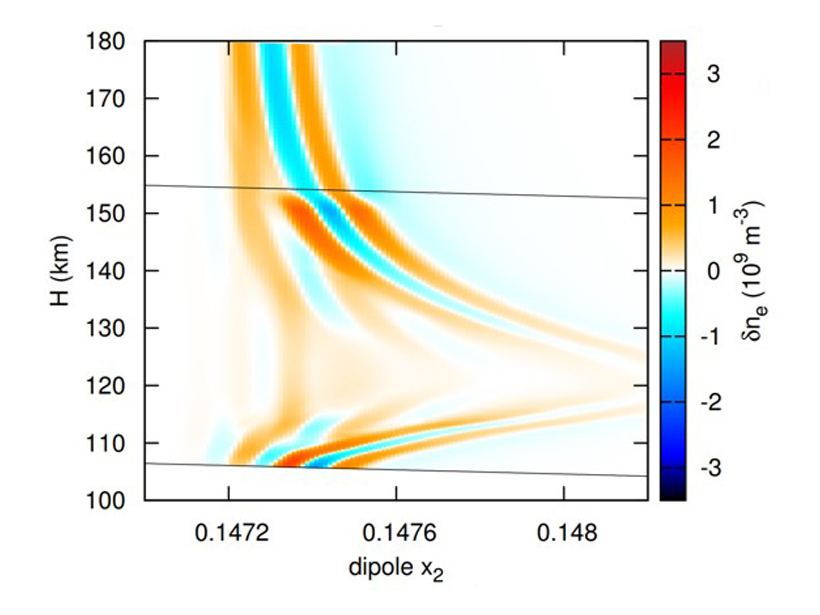Source: Geophysical Research Letters
The ionospheric feedback instability describes the fast, spontaneous break-up of large-scale field-aligned currents flowing through a low-conductivity ionosphere. Since the seminal paper by Atkinson in 1970, the ionospheric feedback instability and its small-scale Alfvén-wave currents have been postulated as an important pathway to the formation of small-scale structures in auroral arcs. Previous modeling efforts of this instability are all based on a flat-sheet, height-integrated ionosphere approximation. Sydorenko and Rankin [2017] are the first to apply a simplified but more realistic ionosphere that varies with height. It shows that, in the height-resolved E-layer, the vertical shear in the horizontal ion flow velocity stretches plasma density perturbations in the horizontal direction and thus has a stabilizing effect on the instability. This study represents a significant development, with important implications for the well-developed theory on the auroral arc formation.
Citation: Sydorenko, D. and R. Rankin [2017], The stabilizing effect of collision-induced velocity shear on the ionospheric feedback instability in Earth’s magnetosphere, Geophysical Research Letters, 44, 6534–6542, https://doi.org/10.1002/2017GL073415.
—Gang Lu, Editor, Geophysical Research Letters
Text © 2017. The authors. CC BY-NC-ND 3.0
Except where otherwise noted, images are subject to copyright. Any reuse without express permission from the copyright owner is prohibited.

